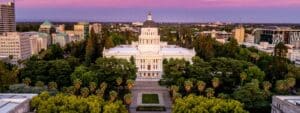On April 3, the Metropolitan Transportation Commission released version 3.0 (PDF) of the proposed OneBayArea grant program, affectionately known as “OBAG.” Here’s the skinny:
The good
Ever since the grant program was introduced back in July 2011, Greenbelt Alliance has been pushing for more dollars to be included in the program to support to cities and counties who are planning for sustainable, equitable land use. In July, MTC proposed allocating $214 million to the OneBayArea grant program over a three-year period. “OBAG 3.0” proposes $320 million over four years. More money = good.
And things are looking really good on the land conservation front. We’re thrilled to report that the Coastal Conservancy and the Moore Foundation have expressed interest in aligning their funding with projects funded through the OneBayArea conservation grant pilot program. Both organizations have also volunteered to serve on the committee that evaluates grant proposals to provide feedback on which projects would be best suited for matching funds.
At the same time, OBAG 3.0 specifically calls for prioritizing projects that can leverage these outside funds. That means that not only will projects that maximize conservation outcomes land at the top of the list, but also that MTC’s investment of $5 million in the pilot program could leverage millions more in funds for worthy Bay Area conservation projects.
The bad
An important goal for the OneBayArea grant program was to make sure that those cities and towns doing the most for sustainable and equitable development would be rewarded for their efforts. The cities doing the lion’s share of the work should get the lion’s share of the dollars.
Unfortunately, OBAG 3.0 basically punts the question of which cities will get what funding to the county Congestion Management Agencies (CMAs). The regional program doesn’t address issues like rewarding cities that have the best track record of building new homes – especially affordable homes – in sustainable places, or making sure cities have policies in place to create more affordable homes and prevent unwanted displacement of low-income residents.
We see this as a real missed opportunity to link regional spending to the implementation of regional priorities at the local level. However, there is…
A silver lining
Under OBAG 3.0, the CMAs will be required to develop a “Priority Development Area (PDA) Growth Strategy” in order to receive OBAG funding. CMAs will gather information about the land-use plans and policy landscape for each PDA in their county, as well as the cities where the PDAs are located, and take this information into account when distributing OBAG funds.
The draft guidelines for the PDA Growth Strategy (Attachment 4 of the staff report PDF) are too vague and slippery to ensure a good outcome. Our friends at Public Advocates whipped together some excellent proposed changes that would firm things up a lot; we’re pushing MTC to incorporate these changes.
It’s also useful to poke our heads up a bit from the near-term question of how this first round of OBAG funds will be distributed and look at things from …
The long-term perspective
The CMAs are in charge of allocating millions of dollars every year. Traditionally, they have had very little exposure to – or interest in – land-use planning, which means they think very little about questions like sustainable growth patterns and equitable housing development when making funding decisions.
As CMAs grapple with these issues in a meaningful way through the process of developing their PDA Growth Strategies, I’m hopeful that sustainable and equitable land-use considerations will begin to permeate the rest of their funding decisions as well.




